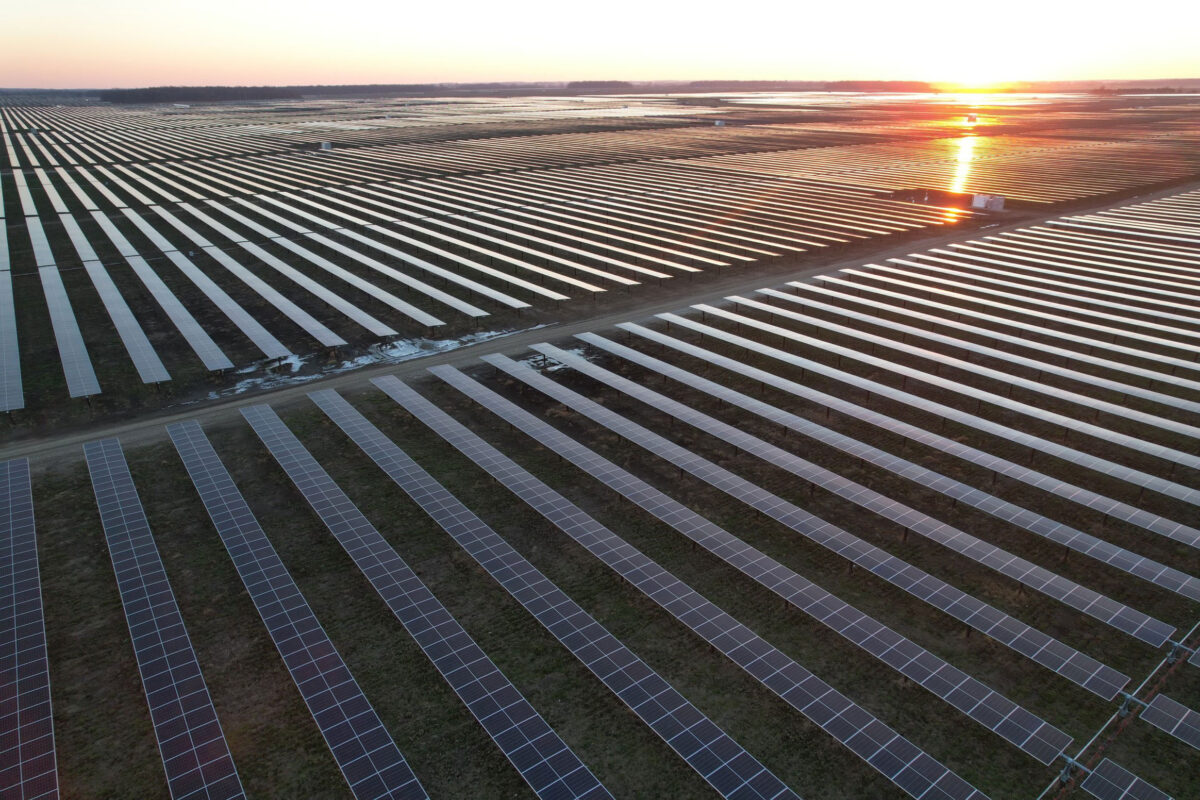Solar developers EDF Renewables North America and Enbridge announced that the first phase of its Fox Squirrel Solar complex in Ohio is fully operational and delivering electricity to the PJM grid. The three-phase project is located in Madison County, Ohio.
Represented in DC capacity ratings, Fox Squirrel’s first phase is a 194 MW project that reached operations in December 2023. Phase two will add another 325 MW, expected to be active by mid-2024, and phase three will add 230 MW, bringing the total capacity added to 749 MW.
Once complete, Fox Squirrel would be the largest solar facility in Ohio, although an 800 MW project was proposed by Savion in early 2023.
The project, among the largest in the United States, secured 20-year power purchase agreements with a “strong investment grade counterparty.” It is large enough to power the equivalent of 118,000 average Ohio homes.
Fox Squirrel is comprised of 1.4 million solar panels and 159 inverters. During peak construction of the first phase, 650 workers were onsite, installing 10,000 panels per day.
Enbridge invested in the project’s first phase and announced plans to reach final investment decisions on the following phases through 2024, provided certain conditions are met.
“The project underscores our energy transition leadership and highlights our rigorous capital allocation process which targets projects that are immediately accretive to [discounted cash flow] per share and complementary to our growth outlook,” said Matthew Akman, executive vice president corporate strategy and president, power, Enbridge.
Project developer EDF Renewables has 35 years of experience and 16 GW of solar, wind, and storage projects developed. The company is a provider of a wide range of integrated energy solutions from grid-scale power to electric vehicle charging.
Development challenges
Public opposition has led to several large solar projects in Ohio to be rejected. In August 2023, the Ohio Power Siting Board (OPSB) revised its guidelines for solar facilities that exceed 50 MWac. These updates include sound regulations that extend to a mile away, modified setbacks – allowing for a 350 foot setback for non-participating neighbors – and a contingency plan in the event of a horizontal directional drilling inadvertent release of drilling fluid.
Ohio continues to navigate development challenges due to “general opposition by local citizens and governmental bodies.” Various counties in the state have taken steps to prohibit wind and solar projects outright. To date, ten counties have implemented solar bans. Clermont County Commissioners unanimously barred large solar and wind projects in seven townships.
The state also introduced legislation to create a community solar market. Ohio state representatives James M. Hoops (R-Napoleon) and Sharon Ray (R-Wadsworth) introduced the legislation, which would carve out a 1.75 GW community solar pilot program.
Ohio University conducted an economic analysis on the program, finding that it would generate an estimated $5.6 billion in gross output and $409.5 million in local tax revenues.
This content is protected by copyright and may not be reused. If you want to cooperate with us and would like to reuse some of our content, please contact: editors@pv-magazine.com.









By submitting this form you agree to pv magazine using your data for the purposes of publishing your comment.
Your personal data will only be disclosed or otherwise transmitted to third parties for the purposes of spam filtering or if this is necessary for technical maintenance of the website. Any other transfer to third parties will not take place unless this is justified on the basis of applicable data protection regulations or if pv magazine is legally obliged to do so.
You may revoke this consent at any time with effect for the future, in which case your personal data will be deleted immediately. Otherwise, your data will be deleted if pv magazine has processed your request or the purpose of data storage is fulfilled.
Further information on data privacy can be found in our Data Protection Policy.